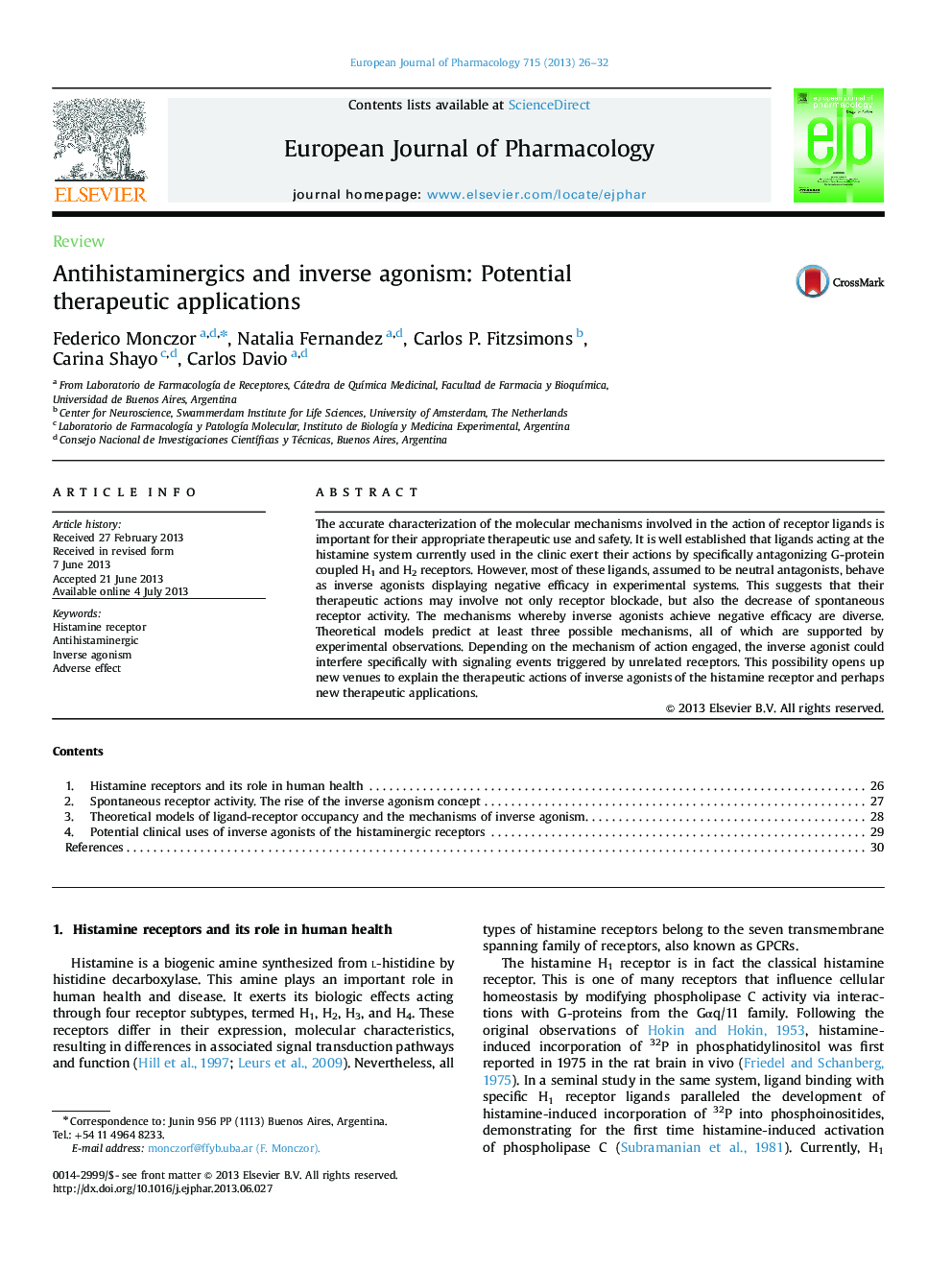| کد مقاله | کد نشریه | سال انتشار | مقاله انگلیسی | نسخه تمام متن |
|---|---|---|---|---|
| 2532046 | 1558966 | 2013 | 7 صفحه PDF | دانلود رایگان |

The accurate characterization of the molecular mechanisms involved in the action of receptor ligands is important for their appropriate therapeutic use and safety. It is well established that ligands acting at the histamine system currently used in the clinic exert their actions by specifically antagonizing G-protein coupled H1 and H2 receptors. However, most of these ligands, assumed to be neutral antagonists, behave as inverse agonists displaying negative efficacy in experimental systems. This suggests that their therapeutic actions may involve not only receptor blockade, but also the decrease of spontaneous receptor activity. The mechanisms whereby inverse agonists achieve negative efficacy are diverse. Theoretical models predict at least three possible mechanisms, all of which are supported by experimental observations. Depending on the mechanism of action engaged, the inverse agonist could interfere specifically with signaling events triggered by unrelated receptors. This possibility opens up new venues to explain the therapeutic actions of inverse agonists of the histamine receptor and perhaps new therapeutic applications.
Figure optionsDownload high-quality image (114 K)Download as PowerPoint slide
Journal: European Journal of Pharmacology - Volume 715, Issues 1–3, 5 September 2013, Pages 26–32